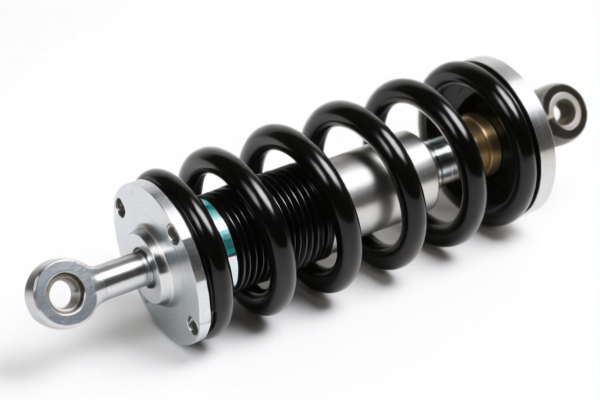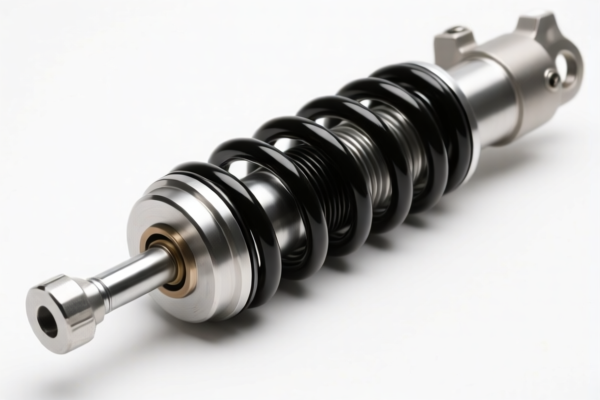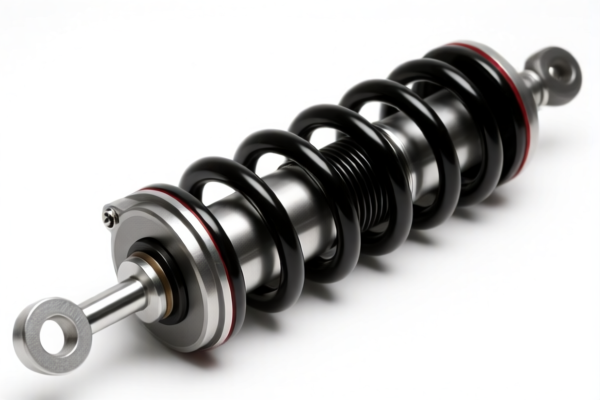| HS Code | Official Doc | Tariff Rate | Origin | Destination | Effective Date |
|---|---|---|---|---|---|
| 8479899560 | Doc | 32.5% | CN | US | 2025-05-12 |
| 8487900080 | Doc | 83.9% | CN | US | 2025-05-12 |
| 8487900040 | Doc | 58.9% | CN | US | 2025-05-12 |
| 7326908688 | Doc | 82.9% | CN | US | 2025-05-12 |
| 7006001000 | Doc | 63.8% | CN | US | 2025-05-12 |
| 7006004050 | Doc | 59.9% | CN | US | 2025-05-12 |
| 7003190000 | Doc | 56.3% | CN | US | 2025-05-12 |
| 7003300000 | Doc | 61.3% | CN | US | 2025-05-12 |
| 8302413000 | Doc | 83.9% | CN | US | 2025-05-12 |
| 8302419045 | Doc | 58.5% | CN | US | 2025-05-12 |
| 8304000000 | Doc | 33.9% | CN | US | 2025-05-12 |
| 4016993510 | Doc | 55.0% | CN | US | 2025-05-12 |
| 4016995500 | Doc | 57.5% | CN | US | 2025-05-12 |
| 4008194000 | Doc | 55.0% | CN | US | 2025-05-12 |
| 4008196000 | Doc | 58.3% | CN | US | 2025-05-12 |




Door Shock Absorbers
Door shock absorbers, also known as door dampers, are mechanical devices designed to control the closing speed and prevent slamming of doors. They are widely used in residential, commercial, and industrial settings to enhance safety, reduce noise, and prolong door and frame life.
Material
- Body: Typically constructed from steel, aluminum alloy, or stainless steel for durability and corrosion resistance.
- Piston Rod: Commonly made of stainless steel to withstand friction and environmental factors.
- Seals: Often utilize rubber or synthetic polymers for effective fluid containment.
- Fluid: Hydraulic oil is the most common fluid used, chosen for its consistent performance across varying temperatures and its non-corrosive properties. Pneumatic (air-based) versions also exist, though less common.
Purpose
- Controlled Closing: The primary function is to regulate the speed at which a door closes, preventing forceful impacts.
- Noise Reduction: Dampening the closing action significantly reduces noise pollution.
- Safety Enhancement: Minimizes the risk of injury caused by doors slamming on fingers or objects.
- Door Frame Protection: Reduces stress on door frames and hardware, extending their lifespan.
- Security: In some applications, they contribute to a more secure closure, ensuring a tighter seal.
Function
Door shock absorbers operate on the principles of hydraulic or pneumatic resistance.
- Hydraulic Dampers: Utilize a piston moving within a cylinder filled with hydraulic oil. As the door closes, the piston forces oil through small orifices, creating resistance proportional to the closing speed. Adjustable valves control the flow rate, allowing customization of the closing speed.
- Pneumatic Dampers: Employ compressed air to provide resistance. As the door closes, air is forced through a restricted passage, controlling the speed. These are generally less precise than hydraulic versions.
Usage Scenarios
- Residential Doors: Interior and exterior doors, especially those frequently used or in high-traffic areas.
- Commercial Buildings: Office doors, hotel room doors, and public access doors.
- Industrial Facilities: Warehouse doors, machine room doors, and fire doors.
- Automotive Applications: Vehicle doors (though these are often integrated systems rather than standalone dampers).
- Furniture: Cabinet doors and soft-close mechanisms.
Common Types
- Rack and Pinion Dampers: The most prevalent type, utilizing a rack and pinion gear system to control the closing speed. They are adjustable and suitable for a wide range of door sizes and weights.
- Cam Dampers: Employ a cam mechanism to regulate the closing action. They are typically non-adjustable and used for lighter-duty applications.
- Integrated Dampers: Built directly into the door hardware, such as hinges or closers.
- Floor Spring Dampers: Located in the floor beneath the door, offering a concealed and robust damping solution, often used for heavy doors.
- Gas Spring Dampers: Utilize compressed gas to provide a controlled closing action, frequently used in furniture and lighter doors.
Door shock absorbers can be categorized based on their material composition and application. The following HS codes are relevant based on the provided information:
- 8302413000: Base metal mountings, fittings and similar articles suitable for buildings: Other mountings, fittings and similar articles, and parts thereof: Suitable for buildings: Door closers (except automatic door closers), and parts thereof. This code applies to door closers and their parts, which include shock absorbers designed for building doors. The '83' chapter covers base metal articles, '02' specifies mountings, fittings, and similar articles, and '413000' further defines door closers.
- 8302419045: Base metal mountings, fittings and similar articles suitable for furniture, doors, staircases, windows, blinds, coachwork, saddlery, trunks, chests, caskets or the like; base metal hat racks, hat-pegs, brackets and similar fixtures; castors with mountings of base metal; automatic door closers of base metal; and base metal parts thereof: Other mountings, fittings and similar articles, and parts thereof: Suitable for buildings: Other: Other Suitable for interior and exterior doors (except garage, overhead or sliding doors): Other. This code covers other mountings, fittings, and parts suitable for doors, including shock absorbers for interior and exterior doors (excluding garage, overhead, or sliding doors).
- 4016993510: Other articles of vulcanized rubber other than hard rubber: Other: Other: Of natural rubber: Vibration control goods of a kind used in the vehicles of headings 8701 through 8705. This code applies to vibration control goods made of natural rubber, which can include shock absorbers used in vehicles.
- 4016995500: Other articles of vulcanized rubber other than hard rubber: Other: Other: Other: Vibration control goods of a kind used in the vehicles of headings 8701 through 8705. This code applies to vibration control goods made of other vulcanized rubber (not hard rubber), which can include shock absorbers used in vehicles.
Important Note: Regarding HS codes 4016993510 and 4016995500, the description specifically mentions "vibration control goods of a kind used in the vehicles of headings 8701 through 8705". Therefore, these codes are applicable only if the door shock absorbers are intended for use in vehicles.
Proactive Suggestion: When declaring under HS code 8302413000 or 8302419045, it is important to verify the material composition (steel, aluminum, etc.) as this may affect the applicable tariff rates. Additionally, the description specifies "suitable for buildings," so ensure the shock absorbers are intended for building applications.
Customer Reviews
No reviews yet.